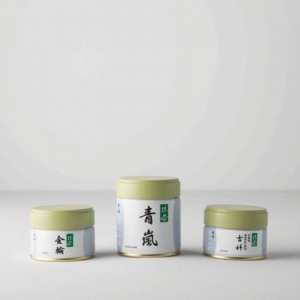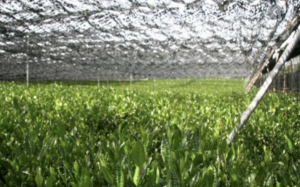Choosing the Best Matcha Tea – Marukyu Koyamaen
Written by Keiko, February 2021
I am a big tea lover and I drink a lot of tea. In over 25 years, I’ve tried many different types of matcha tea.
My latest favourite is Unkaku from Marukyu Koyamaen. It’s got a particularly light, elegant flavour, with some natural sweetness. I’m not alone in liking it, as Unkaku won The Best Taste Award at the international tea competition in Hong Kong in 2018.
How to drink Matcha tea
It is one of those teas that is not bitter at all, so you don’t need any milk or sugar to enjoy it, though if you prefer some sweetness, my personal choice would be white chocolate or Japanese sweet wagashi to accompany it. Japanese wagashi is made of Azuki beans, which are widely available in UK supermarkets these days, which means it’s not impossible to make vegan and gluten-free homemade wagashi. I will discuss homemade wagashi in another blog soon.
About Marukyu Koyamaen
I visited Koyamaen’s tea factory in Uji Kyoto in 2019. It was an eye-opening experience, and according to the tea specialist there, one of the signs of the very best tea is a very bright colour – an almost neon bright green. It’s the young tender leaves that make the top grade matcha tea this colour. Normally older and more bitter tea is a darker green or a more khaki shade, and generally, lower grade and cooking grade matcha tea is a darker green. There’s also the nose test. When you open the tin, there’s a distinct earthy smell which I really enjoy, which the lower grades of tea just don’t have.
I used to think matcha tea has a spoilt time in comparison with other teas. Matcha farmers go to the bother of using reed screens on top of the tea trees, so as to shade and protect the tea leaves from strong sunlight, and to slow down the growing process (see image). This slowing down process is actually very important in producing soft tender leaves, and in creating exceptional amounts of Vitamin C, and the umami taste.
With some lesser grade match tea farming, these reed screens are not used. This means that large amounts of tea can be produced quickly, but the leaves are rough and the taste is bitter. If you like matcha latte, you won’t really taste the umami and the natural sweetness of the matcha tea, as the taste of the milk will be quite powerful, but I would still recommend you to have a few sips without milk, as it is really refreshing with its earthy taste, and then after a sip or two, you can enjoy milder matcha latte!
How to produce Matcha
The tea farmers pick the tea by hand in Kyoto and steam leaves and let them dry. And then the makers grind up the leaves to produce the matcha green tea powder. It’s then up to us to mix the tea powder with hot water and enjoy the tea! The Japanese people started to drink matcha tea in 12th century, initially as a medicine. Koyamaen has been producing matcha tea since 1704 and have the reputation as one of the best matcha tea makers in the world.
There are so many reasons for drinking matcha tea: for taste, culture, tradition, for beauty and health even, as matcha tea contains large amounts of vitamin C, four times more, in fact, than oranges. Or all those reasons together!
Find out more about Matcha from Marukyu Koyamaen


